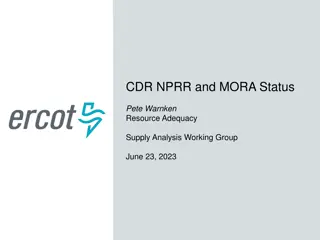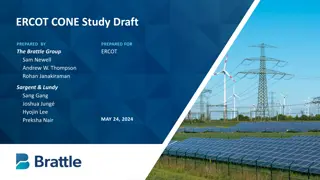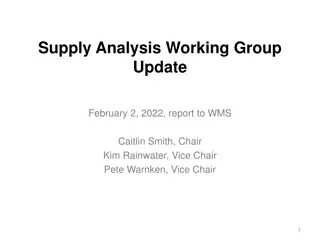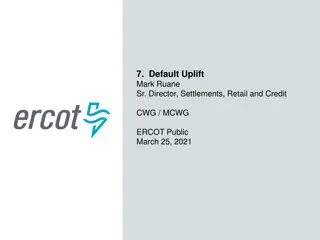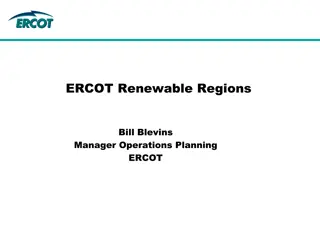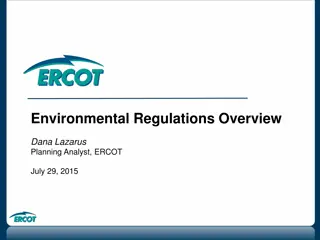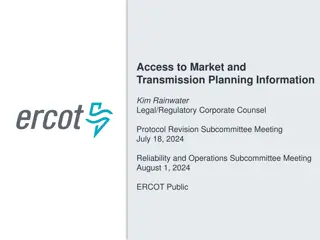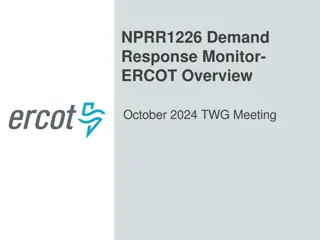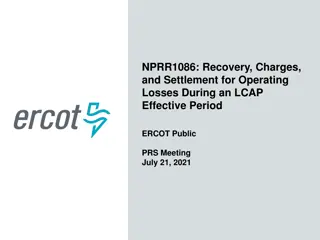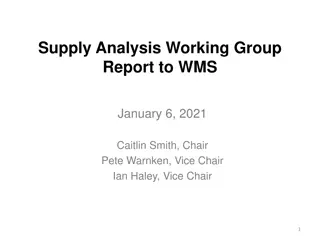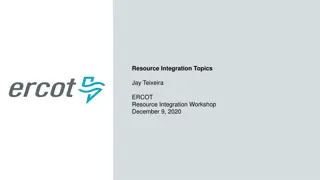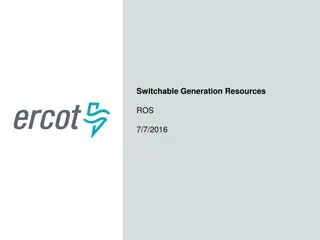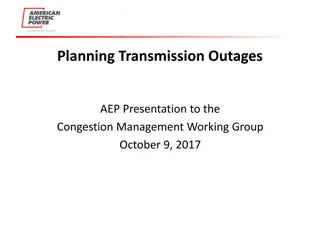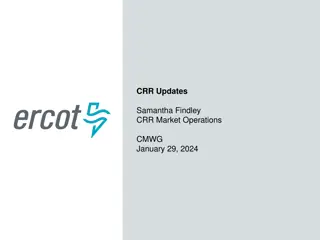ERCOT Region Overview
The ERCOT Region, serving most of Texas, boasts an interconnected electrical system with significant capacity and numerous generation units. This overview delves into key data on the region's energy demand, peak capacity, installed capacity, wind and solar generation, and wholesale market electricity prices, providing valuable insights into Texas' energy landscape.
Download Presentation

Please find below an Image/Link to download the presentation.
The content on the website is provided AS IS for your information and personal use only. It may not be sold, licensed, or shared on other websites without obtaining consent from the author.If you encounter any issues during the download, it is possible that the publisher has removed the file from their server.
You are allowed to download the files provided on this website for personal or commercial use, subject to the condition that they are used lawfully. All files are the property of their respective owners.
The content on the website is provided AS IS for your information and personal use only. It may not be sold, licensed, or shared on other websites without obtaining consent from the author.
E N D
Presentation Transcript
ERCOT Overview Warren Lasher, Sr. Director, System Planning NASUCA Annual Meeting November 18, 2019
The ERCOT Region The interconnected electrical system serving most of Texas, with limited external connections 90% of Texas electric load; 75% of Texas land 74,666 MW peak, August 12, 2019 More than 46,500 miles of transmission lines Western Interconnection Includes El Paso and Far West Texas Eastern Interconnection Includes portions of East Texas and the Panhandle region 650+ generation units (excluding PUNs) 220 MW with SPP ERCOT connections to other grids are limited to ~1,250 MW of direct current (DC) ties, which allow control over flow of electricity 600 MW with SPP 30 MW with CENACE at Eagle Pass ERCOT Interconnection *preliminary operating data 100 MW with CENACE at Laredo 300 MW with CENACE at McAllen 2 PUBLIC
ERCOT Installed Capacity (1999-2018) 100,000 Wind and solar values are based on nameplate capacity (not adjusted for peak capacity contribution) 21.4% 80,000 0.3% 12.1% 60,000 51.6% 35.4% 40,000 4.8% 20,000 0 1999 2000 2001 2002 2003 2004 2005 2006 2007 2008 2009 2010 2011 2012 2013 2014 2015 2016 2017 2018 Nuclear Coal Other Gas CC Gas Steam Gas CT/IC Wind Solar 4 PUBLIC
Utility Scale Solar Generation Capacity September 2019 6 PUBLIC
Average Wholesale Market Electricity Prices* $90 $9 $80 $8 $70 $7 Natural Gas Price ($/MMBtu) Electricity Price ($/MWh) $60 $6 $50 $5 $40 $4 $30 $3 $20 $2 $10 $1 $0 $0 2002 2003 2004 2005 2006 2007 2008 2009 2010 2011 2012 2013 2014 2015 2016 2017 2018 ERCOT 25.64 44.26 44.64 72.79 55.22 56.35 77.19 34.03 39.40 53.23 28.33 33.71 40.64 26.77 24.62 28.25 35.63 Gas 3.32 5.40 5.68 8.01 6.38 6.64 8.50 3.74 4.34 3.94 2.71 3.70 4.32 2.57 2.45 2.98 3.22 *Source: ERCOT Independent Market Monitor (http://www.ercot.com/content/wcm/key_documents_lists/161457/11_Independent_Market_Monitor__IMM__Report.pdf) 7 PUBLIC
Economically Optimal Reserve Margin Total System Costs Across Planning Reserve Margins $26,900 Economically Optimal Reserve Margin at 9.0% $26,700 Firm Load Shedding Regulation Shortages Non-Spinning Reserve Shortages Total System Costs ($M/year) Spinning Reserve Shortages $26,500 Price-Responsive Demand TDSP Load Management Non-Controllable LRs 30-Minute ERS $26,300 10-Minute ERS Emergency Generation External System Costs (Above Baseline) $26,100 Production Costs (Above Baseline) Marginal CC Capital Costs $25,900 $25,700 4% 5% 6% 7% 8% 9% 10% 11% 12% 13% 14% 15% 16% 17% 18% ERCOT Reserve Margin (%) 8 PUBLIC



